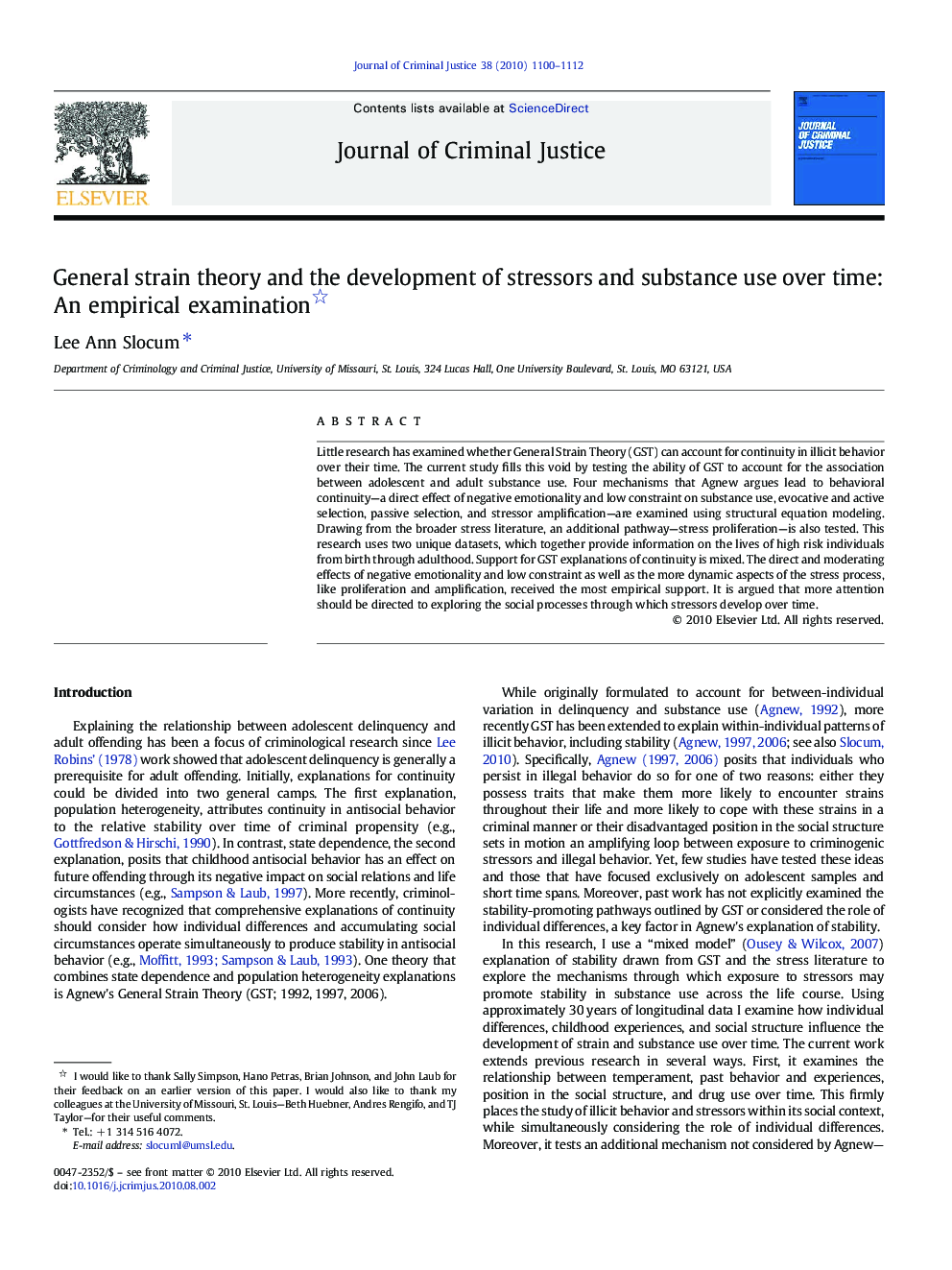| Article ID | Journal | Published Year | Pages | File Type |
|---|---|---|---|---|
| 882985 | Journal of Criminal Justice | 2010 | 13 Pages |
Little research has examined whether General Strain Theory (GST) can account for continuity in illicit behavior over their time. The current study fills this void by testing the ability of GST to account for the association between adolescent and adult substance use. Four mechanisms that Agnew argues lead to behavioral continuity—a direct effect of negative emotionality and low constraint on substance use, evocative and active selection, passive selection, and stressor amplification—are examined using structural equation modeling. Drawing from the broader stress literature, an additional pathway—stress proliferation—is also tested. This research uses two unique datasets, which together provide information on the lives of high risk individuals from birth through adulthood. Support for GST explanations of continuity is mixed. The direct and moderating effects of negative emotionality and low constraint as well as the more dynamic aspects of the stress process, like proliferation and amplification, received the most empirical support. It is argued that more attention should be directed to exploring the social processes through which stressors develop over time.
Research Highlights► Support for GST explanations of continuity was mixed. ► Negative emotionality/low constraint had a direct effect on adolescent drug use. ► Negative emotionality/low constraint enhanced the effects of stressors in adulthood. ► No support was found for evocative/active selection or passive selection. ► Dynamic explanations of continuity—amplification and proliferation—were supported.
